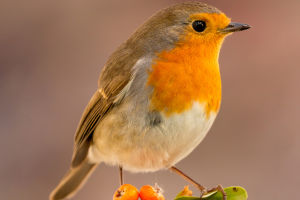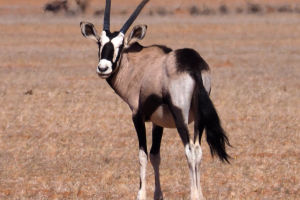Vibrant Guardians
When you stroll along the water's edge, sometimes you hear a sharp "beep" of a call. Then, a bright blue blur streaks past at high speed. This flash of blue is the most widespread and common member of the kingfisher family, the Common Kingfisher.
The Common Kingfisher is a terrestrial wild animal with significant ecological, scientific, and social value. It inhabits water bodies with shrubs or sparse forests, clear and slow-flowing streams, brooks, lakes, and irrigation canals, with distribution across the globe.
Let's delve into understanding the Common Kingfisher:
⑴ Not Just Blue
Describing the appearance of the Common Kingfisher is quite tricky due to its highly colorful feathers. In zoological records and bird guides, it's typically summarized as a small bird with blue upperparts and orange underparts, a large head, and small feet, measuring only about 15 centimeters including the bill.
Specifically, the head, back, wings, and tail feathers of the Common Kingfisher are all blue, with the color being particularly vibrant from the back to the tail feathers, shimmering with a metallic sheen of bright blue. While the blue on the head and wings may not be as vivid, they are adorned with many bright blue spots. The orange ear patches and white neck patches on the head are particularly noticeable. The throat is also white, but the chest and abdomen are orange.
⑵ Identifying Gender by Beak
The bird's beak is composed of upper and lower parts, referred to as the upper and lower beak, respectively. In the Common Kingfisher, both the upper and lower beaks of males are black, while the lower base of the female's beak is predominantly orange-red.
⑶ Superior Fishing Skills
The Common Kingfisher consumes about 60% of its body weight in fish every day. They often perch by the water for extended periods, with good visibility (such as on extended branches, protruding lotus pods, or raised stone platforms on the bank).
Once prey is spotted, they dart out like an arrow, diving into the water, seizing the fish, and swiftly returning to a resting place, all in almost an instant. Upon entering the water, the kingfisher can maintain excellent vision, swiftly adjusting to the contrast in angles caused by light underwater. However, even with such swift fishing actions, success is not guaranteed.
⑷ Robust Eating Habits
Although members of the kingfisher family are carnivores, they lack the sharp beaks and talons of raptors for tearing apart prey.
So, after catching a fish, the Common Kingfisher typically thrashes it wildly to stun it before swallowing it whole. Fish and shrimp are staples in the kingfisher's diet, requiring careful consumption to enjoy the delicacy without being pricked.
Some larger species of kingfishers, such as the White-browed Kingfisher, White-breasted Kingfisher, and Stork-billed Kingfisher, also prey on arthropods, small amphibians and reptiles, even fledglings, and rodents.
⑸ Nesting in Holes Instead of Trees
The Common Kingfisher excavates holes in clay cliffs by the water's edge to establish its home, typically about 60 centimeters deep. Such nests provide better protection against predators. Additionally, the kingfisher's feet are weak, with little gripping ability, making it unable to gather nesting materials with its claws.
However, their long and sturdy beaks make digging a hole in the soil relatively easy. After the chicks hatch, adult kingfishers make several trips a day to catch fish to feed them. The nest interior is rudimentary, with minimal lining material. As the chicks' appetite grows, they continuously regurgitate fish bones, shrimp shells, and other materials, forming a "thorny bed" in the nest where the young kingfishers spend their days.
⑹ Self-Cultivation of Models
The Common Kingfisher demonstrates strong adaptability and can thrive in human-populated areas. They can be found wherever there is water with fish, even if not particularly shallow. In most cases, their range of activities is relatively stable, especially when water quality is good and fish are plentiful.
Therefore, encountering a Common Kingfisher in a certain location increases the likelihood of repeated observations. Common Kingfishers also enjoy flying and calling while flying low (often skimming the water or passing by the shore).
So when you hear a sharp beep by the water, be sure to observe, as a blue "little lightning bolt" is highly likely to appear nearby and is easy to track. Generally, after landing, Common Kingfishers will rest quietly, seemingly staying specifically for you to observe and photograph at leisure.
⑺ Temptation First, Camera Second
Capturing a Common Kingfisher entering or exiting the water to catch fish is a dream for many photographers. However, due to the kingfisher's rapid dives, it's challenging to capture this exciting moment unless you have exceptionally good luck.
Most of the stunning photos we see are often staged, where a small area of water in the kingfisher's habitat is isolated with nets, and many small fish are released into it. Then, manual focusing is done on this area, followed by waiting. While staging is not illegal, it impacts the original habits and ecology of wild animals, and the animals become part of the artificial scene. We are observers of wildlife and should not become photographers of artificial scenes.


